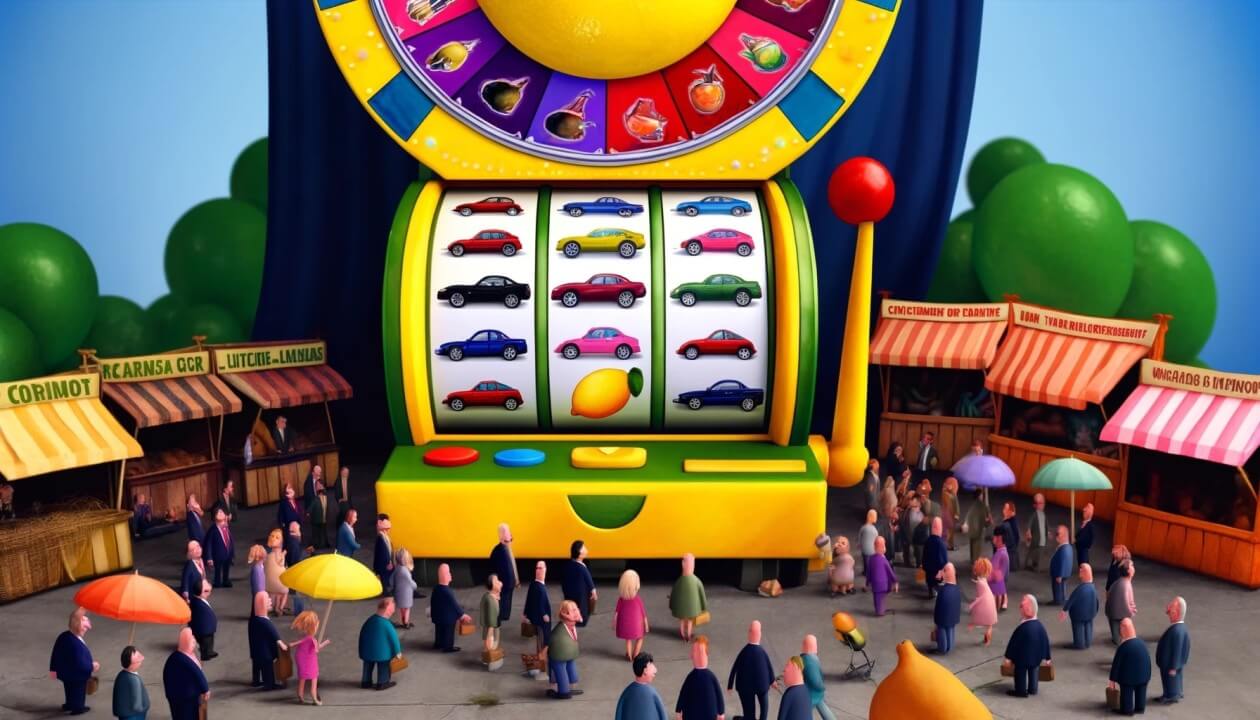In the great slot machine of reinsurance, underwriters have limited means of distinguishing golden cedents from those that will come up yellow.
With so little confidence in cedent data quality – and no time to go digging through ill-organised spreadsheet submissions – reinsurance buyers, brokers and underwriters could soon face the dreaded “market for lemons”.
1 / (0) 1
So what is a lemon?
Basically, it’s something you buy that turns out to be a bit rubbish.
The way in which markets respond to the risk of lemons is fascinating – and brings a cautionary tale for the reinsurance market.
So let’s dive into the theory, and then we’ll see how the reinsurance market is coping with this famously bitter pill.
Lemon aid
When ascertaining the quality of goods on offer is too difficult, the entire market suffers.
Nobel prizewinner for economics, George Akerlof, proved this successfully with his paper, “The Market for ‘Lemons’: Quality Uncertainty and the Market Mechanism”.
Studying how the second-hand car market responded to quality uncertainty risk – in this case, the risk that any used vehicle purchased may turn out to be a “lemon” – he discovered that high information asymmetry damages price attractiveness for everyone.
When ascertaining the quality of goods on offer is too difficult, the entire market suffers.
Seeds of doubt
Without a means to establish the reliability of the cars on offer, the second-hand market becomes less-willing to offer good prices.
Fewer good offers makes for a smaller and less attractive market.
To make matters worse, those with good vehicles choose to retain their cars, rather than do deals at rates that are no longer worthwhile – leaving fewer good cars up for grabs on the market.
It was all yellow
As those who remain in the market start to experience a relatively larger proportion of lemons, interest and capacity withdraws even further.
In some cases, this can lead to market failure, with would-be buyers pulling out of entire segments completely.
This leaves some owners with cars they can’t sell – and it doesn’t stop there.
Feeling the squeeze
When the secondary market isn’t functioning, it creates difficulties for those trying to sell new products, too.
Without confidence in the future value of their purchase on the second-hand market, buyers are far less willing to pay expensive new car rates.
Primary and secondary markets operate in symbiosis: it's hard for one to function well without the other.
And although it made for a convenient example, it’s hardly just the world of car sales that exhibits this kind of behaviour.
Making lemonade
Any market that demonstrates information asymmetry – and especially those with higher-risk purchases – can become susceptible to Akerlof’s “market for lemons” syndrome.
Economist readers amongst you may have seen the concept discussed in the last few weeks, as the luxury handbag market suffers the woes of its own lemons: very convincing fakes.
These are markets where, when life gives you lemons, you would rightfully be very upset – so much so, that you might avoid doing the business entirely.
Reinsurance wedges
We’re now reaching the usual point in my articles where a grand pivot begins: retracing our steps from an initial high-concept analogy, back to hard-hitting reinsurance truths.
So let’s get to it.
After all, what is reinsurance, if not the insurance equivalent of the second-hand car market?
What is reinsurance, if not the insurance equivalent of the second-hand car market?
Seed-ent data
Reinsurers take on piles of second-hand risk at a time, with only a limited view of what they’re getting into.
They receive a data pack from the insurer, explaining the nature and history of all the different risks they’ll be taking on.
Based on the information received, they’ll determine the extent to which the cedent’s portfolio is likely to be a lemon.
Easy peasy?
Sadly, it’s not a lemon squeezy process.
The data provided by cedents rarely gives underwriters confidence that the portfolio has un-lemon-like characteristics.
Neither does the typical format chosen – a haberdashery of randomly formatted spreadsheets – encourage them to look more closely for signs of provenance, even when the portfolio itself is perfectly decent.
Without a reliable and efficient process for assessing the portfolio to be assumed, reinsurers are forced to make portfolio-level assumptions about their cedents.
Loads of lemons
There’s no time for individual treatment when submissions arrive by the bucketload, especially when renewal deadlines loom large.
Of course, not all risks are born equal.
But if the underwriters can’t quickly determine which are good for building a strong portfolio – and which are likely to be lemons – they have to hedge their bets.
It feels safer to put up prices for everyone, when there’s no time to assess each and every prospect on its own merits.
The scale of these pricing loads is, quite appropriately for lemons, eye-watering.
It feels safer to put up prices for everyone, when there’s no time to assess each and every prospect on its own merits.
Waxing lyrical
Before submission data, underwriters relied almost exclusively on the reputation of the cedent’s management and on the story they told in their narrative.
On the investor side, too, investors would treat reinsurance as a high-stakes bet, only committing capital they were willing to lose.
But without greater assurances, that the art of risk is nowadays balanced with a healthy dose of data science, reinsurance could never have grown to the market it is today.
Yes, great people can still move the needle on reinsurance deals; but nowadays, it’s data that sets the parameters.
A used risk salesperson – however charismatic – simply won’t cut it, when it comes to reassuring modern day shareholders.
Making meringue
Which brings us to the stiff peaks of a reinsurance market harder than any in recent memory.
A market so hard, that for a number of cedents, it could be existential.
Unable to pass on risks to the second-hand market, many are facing the prospect of hanging up their aprons.
Without a ready and willing reinsurance market, direct insurers are withdrawing from markets where the proof simply isn’t in the pudding.
Failing segments
Where cedents are unable to explain to reinsurers what sits within their portfolios, the insurance markets they support come under threat of collapse.
Just as Akerlof predicted, this hurts everyone – and most importantly, leaves would-be insurance policyholders without vital protections.
It’s not that the risk is unwritable: it’s just hard for reinsurers to get comfortable with what they are getting into.
Given the costs of maintaining a reinsurance team’s focus on any given segment, sometimes the prudent choice seems to be walking away entirely.
Where cedents are unable to explain to reinsurers what sits within their portfolios, the insurance markets they support come under threat of collapse.
Regaining a-peel
So how do cedents avoid being left in the lurch, as suitor-less victims of broad assumptions?
Normally I’d take a moment to make the case for higher quality cedent submission data – but if you made it this far, you might enjoy another analogy-rich article for that message.
Instead, let’s see what we can learn from Akerlof’s research of the second-hand car market.
How did the auto market regain its appeal to buyers and sellers alike?
Lemon pledge
One critical factor saved the secondary – and consequently, the primary – auto markets from becoming a mere shadow of the vibrant sectors they are today.
A factor which let great cars get the price they deserved, and enabled even the lemoniest vehicles to find a home at a fair price.
What was it?
You guessed it:
Consistently structured information about the vehicles in the second-hand market.
In other words; good data.
Pip talk
It took the establishment of a few independent data services to get the market moving again.
In the US, a service called Carfax revolutionised the way in which would-be used car buyers could better understand the risks of what they were buying.
That not only gave them confidence to buy more expensive second-hand vehicles.
It also encouraged them to shop in segments which otherwise would have been avoided at all costs – such as older vehicles, or models known to suffer common problems.
A lemon a day
The granularity of the data – and the rapid ease with which it could be accessed – enabled each and every car to be considered on its own merits.
UK services like Autotrader offer a similar prospect, with filters enabling you to shop for cars, rather than categories.
If you don’t mind a high-mileage, multiple owners, or a scratch down the side – but perhaps, something else is important to you, like the service history – you can quickly find and select those opportunities that match your appetite.
Sadly, reinsurance underwriters, by and large, fly blind in comparison.
Gone sour
Despite the data that should be available, choosing a cedent to back remains more like choosing a horse than a car.
You can see it has four legs and a tail, learn who its parents were and find out what its owner has named it, but not much more.
Until data becomes easier to unbridle, reinsurance will – like the market for buying and selling horses – remain a niche sector for the rich few with money to burn.
For reinsurance to grow its support of communities around the world, who depend on the availability of affordable insurance, we need higher quality data.
And more lemon pledge.
For reinsurance to grow its support of communities around the world, who depend on the availability of affordable insurance, we need higher quality data.


